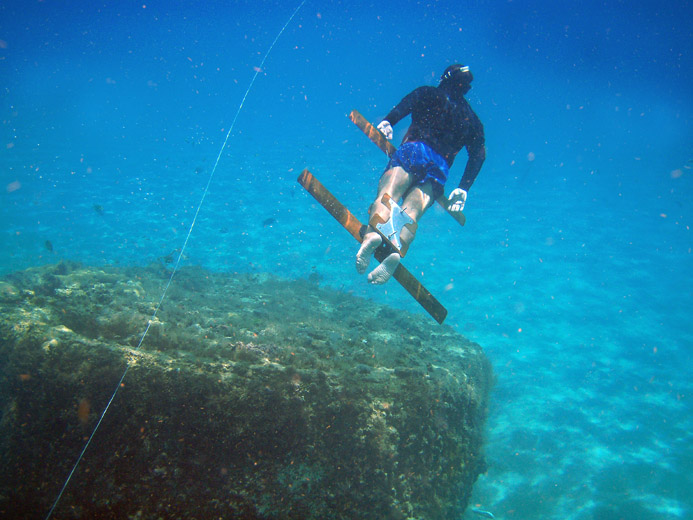It is true that swimming on the surface with fins is more efficient on your back, and I often do it when needing to cross bigger distance quickly. However, once you are under the surface, there is no difference - you can swim in any direction and in any position, and there won't be any significant difference. It could bring you some advantage only if the Aqueon was quite positively or negatively buoyant, allowing so some asymmetric gravitation effect. Even that is quite questionable though. And as long as it is approximately neutrally buoyant, the position cannot have practically any influence on the efficiency or speed. And while at a monofin, theoretically there could be a very tiny difference when swimming underwater close to the surface (moving the water against or above the surface, hence having asymmetric gravitation effect), at Aqueon due to the two hydrofoils moving in opposite directions (when the front moves down, the back goes up, and vice versa, as far as I see), any such difference would be eliminated. If you feel that you move faster when on your back, on my mind, it is just a psychological effect - either you just think you move faster when watching the surface, or maybe you even move faster, but not because of physical conditions, but rather because of the psychological ones (you think you should move faster, hence you do so - that's a quite common effect in human psychology).




